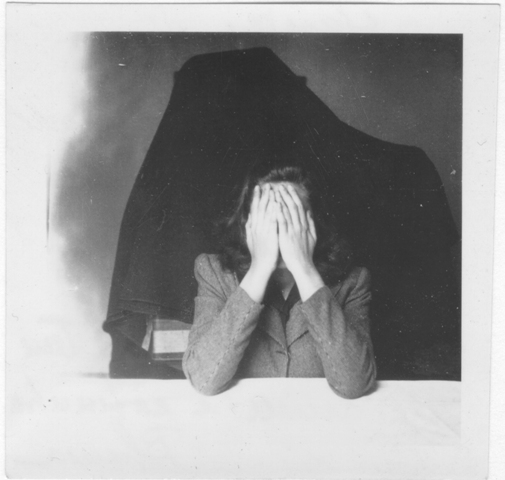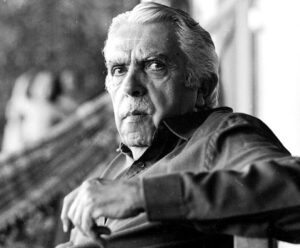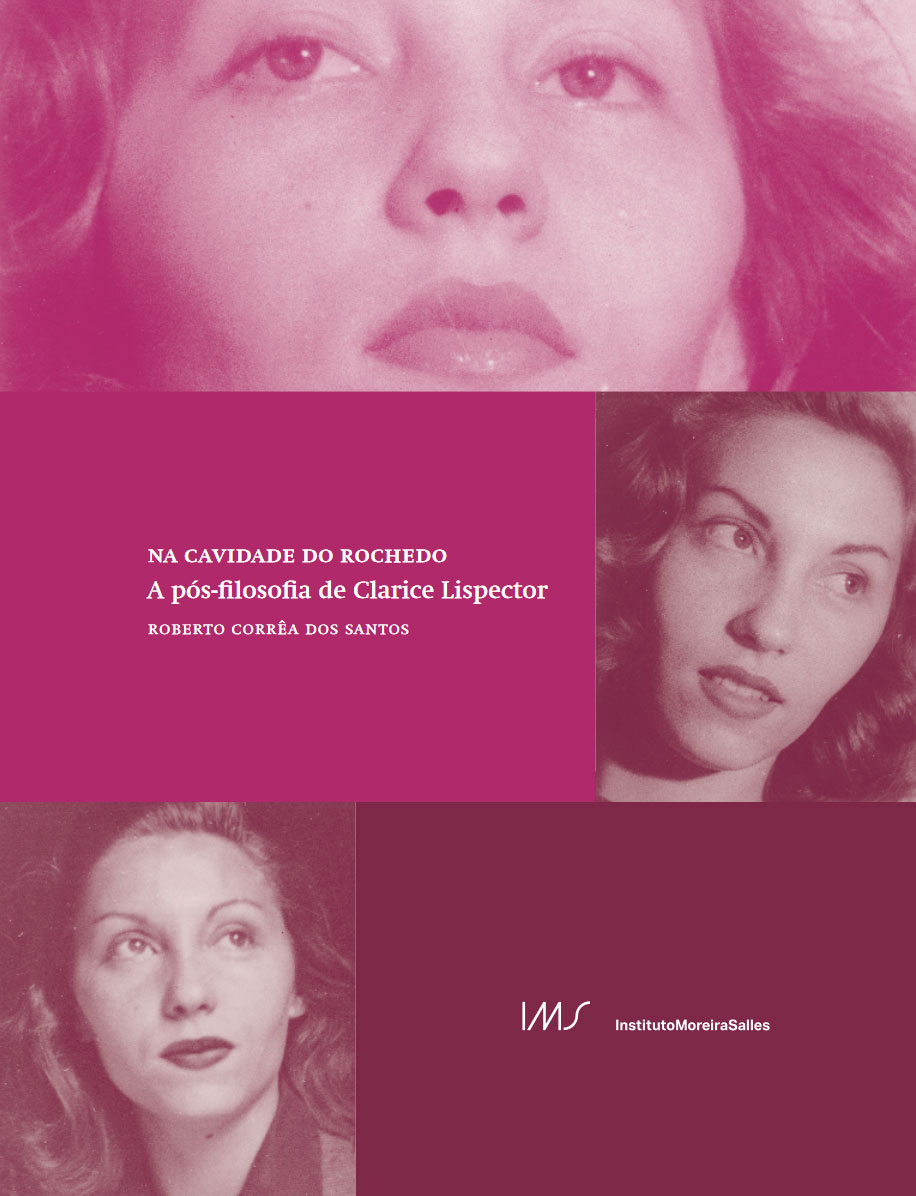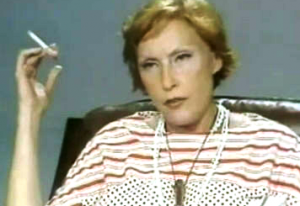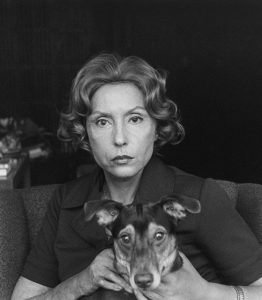, Shadows of words. IMS Clarice Lispector, 2018. Disponível em: https://site.claricelispector.ims.com.br/en/2018/11/26/a-sombra-da-palavra/. Acesso em: 07 January 2026.
In memory of Victor Heringer.
Give me your hand: Now I’m going to tell you how I went into that inexpressiveness that was always my blind, secret quest. How I went into what exists between the number one and the number two, how I saw the mysterious, fiery line, how it is a surreptitious line. A note exists between two notes of music, between two facts exists a fact, between two grains of sand no matter how close together there exists an interval of space, a sense that exists between senses – in the interstices of primordial matter there is the mysterious, fiery line that is the world’s breathing, and the world’s continual breathing is what we hear and call silence.
1. It has become commonplace to say that Clarice Lispector’s writing comes about through a desire to overcome the limits of language and touch her other, which the author names, throughout her work, in different ways: “it,” “nucleus,” “thing,” “unsayable,” “silence.” An outward, impossible, and paradoxical search, for it would consist in reaching, through words, what is beyond them. However, the author has insisted time after time that it is precisely this “failure” to express the unsayable that allows it to become manifest.
Let us start with the text “Writing:”
(…) Unfortunately I don’t know how to ‘write’, I am incapable of ‘relating’ an idea or of ‘dressing up an idea with words.’ What comes to the surface is already expressed in words or simply fails to exist. When writing it, again the only seemingly paradoxical certainty that what gets in the way of writing is having to use words. It’s uncomfortable. If I could write through the intermediary of drawing on wood or smoothing a boy’s head or strolling through the countryside, I would never have entered the path of the word. I would do what so many people who don’t write do, and with exactly the same joy and torment as those who do write, and with the same deep, consolable disappointments: I wouldn’t use words.
It is not a matter of absolutely abandoning the act of writing, not even in the extreme case of not using words; rather, the aim here is the act of “write through the intermediary” of something other than writing (drawings, caresses, strolls), an idea that is reinforced in the following sentence, in which we read that this act of writing through non-writing would allow her to do that which those who do not write do, but “exactly the same joy and torment.” In the actual project (or desire) to abandon writing, the aim, in fact, is its transformation into something else, in which what should be manifested through writing is not the word, but the non-word.
2. One of Clarice’s most famous fragments, “Miraculous Fishing,” also points toward this. The aphorism would later be republished, with slight alterations, in her column in the Jornal do Brasil newspaper on November 6, 1971, in which we read:
So writing is the method for one who uses the word as bait: the word fishing for whatever is not word. When this non-word – the between-the-line – takes the bait, something is written. Once the between-the-line has been caught, one can with relief release the word. But there the analogy ceases: the non-word, in taking the bait, incorporates it. What saves one then is to write distractedly.
In the original, the last sentence appeared slightly different – “What saves one then is to read ‘distractedly” –, perhaps due to the distraction of whoever wrote it, or else to postulate that all writing is reading, even if it is a reading of what has never been written, as Hoffmannsthal wanted. Or even, and perhaps more fundamentally, to point out that what is interesting both in writing and in reading is encountered in the unsaid, such that we must distract ourselves from what is said to focus on what is between the lines. One must observe, in any case, that writing, in this beautiful passage, does not constitute an art or technique of words, but an activity that arises through them: the aim is to fish the non-word, the aim of the lines is to constitute what is between the lines. But the latter is impossible without the former, in an inversion between the said and the unsaid: it is not the word that incorporates its other, it is the other of words, the non-word, that incorporates the word and is only manifested through it. This will establish the ethics of writing that guides Clarice’s work: “But since writing is to occur, at least do not crush the words between the lines.”
3. Água Viva is completely concerned with this maxim. Indeed, in this almost unclassifiable fiction, it is not only taken up in a variation – “The best is not yet written. The best is between the lines,” –but also constitutes the essence of the relation between the narrator and the interlocutor to whom she writes:
I deepen the words as if I were painting, more than an object, its shadow (…) Listen to me, listen to the silence. What I say to you is never what I say to you but something else instead. It captures the thing that escapes me and yet I live from it and am above a shining darkness.
The “spell of the word and its shadow,” as must be clear now, pervades Clarice’s work.
We will begin the text with an opposition between expression and manifestation. It comes from The Passion According to G.H., in which the narrator seeks to take account of an extreme experience of “depersonalization.” How to relate that which, by definition, consists in the total loss of subjectivity and of everything, including language, which would grant G.H. a specificity (as an individual, but also as a member of the human race, since it ultimately concerns a movement of “dehumanization”)? How to take account of the communion with the “neutral,” the “white mass” of the cockroach, how to take account of the “contact with that thing with no qualities and no attributes was repugnant to me, the living thing without name or taste or smell was disgusting”; that which the narrator calls “inexpressive?”
Let us recall that it all begins with G.H. entering the “cave,” the room of the former maid Janair, and coming face to face with a charcoal drawing of three figures on the wall: a man, a woman, and a dog. The way that she characterizes it is significant, keeping in mind the chronicle “Writing:” “The drawing was not an ornament: it was a writing.” Thus, to take account of this drawing-writing and the limit-experience that it propels, the strategy is to develop a writing-drawing: “it will be more of a graphic than a writing, because I try to reproduce rather than express. I need less and less to express myself.” Throughout all her work, there will be this denial of expression and of the expressive, in the name of its other: “I don’t want half-light, I don’t want the face well done, I don’t want the expressive. I want the inexpressive (…), when art is good it is because it touches on the inexpressive, the worst art is expressive.” That is, it is not a matter of the subject expressing herself here, given that the transformation of G.H. consists, as we have seen, in the loss of subjectivity, when all that is left of her is the inexpressive, the impossibility of expressing herself. However, this does not mean that there is no way to relate to this inexpressive remainder, a mode described by the tactile vocabulary of touch and manifestation: “sometimes we ourselves manifest the inexpressive – in art one does this, in corporeal love also.” To manifest, etymologically speaking, designates the gesture of grabbing by the hand, that is, of touching or pointing. It is no coincidence that G.H. is a sculptor and that the question of contact pervades the work in several ways: she says that she has “fought my whole life against the deep desire to let myself be touched,” the interlocutor first appears as a hand that she holds to enter “into the unknown,” etc. To manifest the inexpressive would thus be a way not of expressing it, but rather of touching it: “The vital knot [of the thing] is a finger pointing to it – and, that which has been pointed to awakens like a milligram of radium in the quiet dark.”
4. In the novel, that is, in the account that tries to reproduce the experience of G.H., making it experienceable by the reader, this occurs through a strategy of getting as close as possible to this extreme point (the vital node) through language without crushing it with words, as if the contrast between the excess (effort) of language better manifested the point at which it fails: the unsayable. The effect that the inability of G.H. to express the ineffable experience produces on the reader is that of reproducing the same experience, the same absence of words: she manifests the unsayable by not saying it. For the “maximum act,” the moment in which the communion with the neutral is fully realized – when G.H. eats the cockroach –, is not narrated: having then completely lost her subjectivity by touching the thing, there is nothing to express. Thus, the ineffable is not said, but manifest, at the point in which language fails, in which it becomes impossible to express the inexpressive, in which the maximum act reveals itself to be a minimum act:
Oh, but to reach silence. What a huge effort of voice. My voice is the way I go to seek reality; reality prior to my language exists as an unthinkable thought, but I was and am fatefully impelled to have to know what thought thinks. Reality precedes the voice that seeks it, but like the earth precedes the tree, but like the world precedes the man, but like the sea precedes the view of the sea, life precedes love, bodily matter precedes the body, and one day in its turn language shall have preceded possession of silence. I have to the extent that I determine – and that is the splendor of having a language. But I have much more to the extent that I am unable to determine. Reality is raw material, language the way I seek it – and how I don’t find it. But it is from seeking and not finding that what I have not known is born, and I instantly recognize it. Language is my human endeavor. I have fatefully to go seeking and fatefully I return with empty hands. But – I return with the unsayable.The unsayable can be given me only through the failure of my language. Only when the construct falters do I reach what it could not accomplish.
In this passage, which is found on the last pages of the novel, we are faced with an inversion of the analogy: if the earth precedes the tree, and matter precedes the body, it was to be expected that silence preceded language. But no: it is language that precedes silence, the voice’s effort precedes muteness just as what is between the lines only arises because there are lines, shadows of words only arise because there are words: the unsayable, the experience outside of language (which coincides, in the novel, with the communion with the cockroach) is manifested through language precisely there where she cannot say: failure is success, the unsayable is not said (expressed) through language, it does not become sayable, but manifested as unsayable. That is what is grasped with empty hands in the writing of Clarice Lispector.

